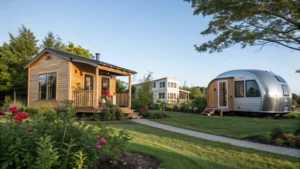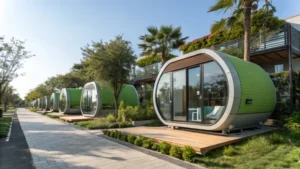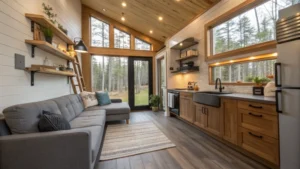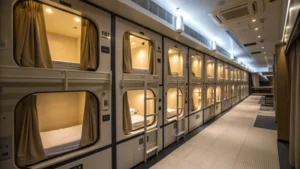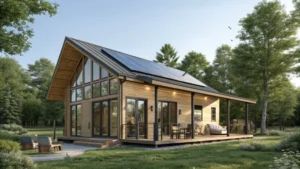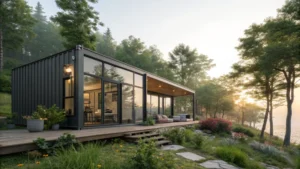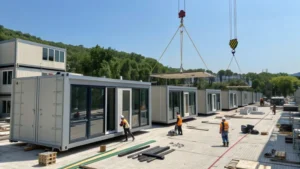
Ever wondered why tiny homes are stealing the spotlight in the housing market?
Tiny homes captivate many due to their affordability, eco-friendliness, and minimalist appeal. They offer a refreshing alternative to traditional housing, particularly for young professionals, retirees, and environmentally conscious individuals who appreciate the lower costs and reduced environmental impact.
I remember the first time I stepped into a tiny home; it felt like stepping into a life of possibilities and fewer burdens. There’s something liberating about knowing that everything you own is within arm’s reach, yet you’re not overwhelmed by excess. While tiny homes are charming in their promise of simplicity, it's crucial to weigh their benefits against potential challenges. From affordability and sustainability to zoning hurdles and financing issues, each aspect can significantly impact the decision to downsize. Join me as I explore these factors that are reshaping how we think about living spaces.
Tiny homes are primarily popular for their affordability.True
Tiny homes cost significantly less than traditional houses, making them appealing.
Tiny homes have a higher environmental impact than traditional homes.False
They use fewer resources and generate less waste, reducing their impact.
What Makes Tiny Homes Affordable?
Ever wondered how tiny homes manage to be both cozy and kind to your wallet?
Tiny homes are affordable because they use less space, require fewer materials, and have lower utility costs. Many are mobile or placed on leased land, avoiding expensive property purchases.
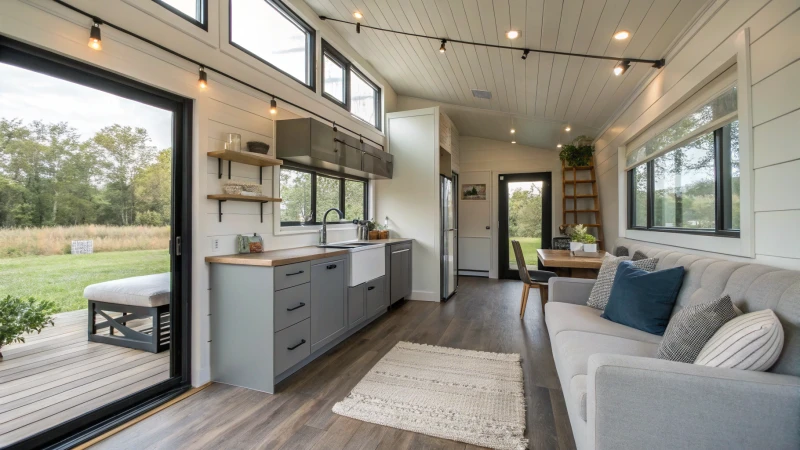
I remember the first time I seriously considered downsizing to a tiny home. It was during a long walk in the countryside, where I stumbled upon a charming little house that seemed to blend seamlessly with the landscape. It got me thinking about how much of my living space was actually necessary, and how much was just for show.
Reduced Construction Costs
One of the biggest revelations was the reduced cost of building a tiny home. With their smaller square footage, they naturally need fewer materials—meaning I wouldn't be shelling out as much cash for lumber or insulation. Many tiny home builders I've met often use reclaimed or recycled materials, which not only saves money but also gives each home a unique story.
| Feature | Traditional Homes | Tiny Homes |
|---|---|---|
| Average Size (sq ft) | 2,500 | 100-400 |
| Material Costs | High | Low |
| Construction Time | 6-12 months | 1-3 months |
Lower Land Costs
Then there's the flexibility with land. When I realized that many tiny homes are mobile, it opened up a world of possibilities. Instead of investing in a pricey piece of property, I could lease land or park in RV-friendly spaces, saving a significant chunk of change.
Additionally, municipalities with high real estate prices may offer incentives for smaller dwellings, making it easier to find affordable placement options.
Energy Efficiency
Let's not forget about energy savings. Tiny homes are snug enough that heating and cooling costs drop significantly. I've seen owners who take it a step further by installing solar panels1 or other renewable energy sources, slashing their bills even more.
| Expense Type | Traditional Homes | Tiny Homes |
|---|---|---|
| Monthly Utilities | High | Low |
| Energy Sources | Conventional | Often Renewable |
Minimal Maintenance
A small space also means less time spent on maintenance—something I greatly appreciate. With fewer nooks and crannies to clean and repair, I could spend more time on things I love. Plus, many tiny homes use durable materials that require less upkeep over the long term2, stretching those dollars further over time.
Financing Options
While getting a mortgage for a tiny home can be tricky, I've found there are other avenues. Personal loans or RV loans can be more accessible, and some builders offer financing plans directly through their companies. It's all about finding what fits best for your financial situation.
It's important to note that interest rates and terms might vary depending on the chosen financing option3, but having options means you can find something that works for you.
Tiny homes use more materials than traditional homes.False
Tiny homes use fewer materials due to their smaller size, lowering costs.
Tiny homes often utilize renewable energy sources.True
Many tiny home owners install solar panels to reduce energy expenses.
How Do Tiny Homes Contribute to Sustainability?
I remember the first time I stepped into a tiny home—it felt like stepping into a new world of possibility and simplicity.
Tiny homes contribute to sustainability by using fewer resources, enhancing energy efficiency, and incorporating eco-friendly materials. Their small size naturally reduces energy consumption, and many designs integrate sustainable technologies.
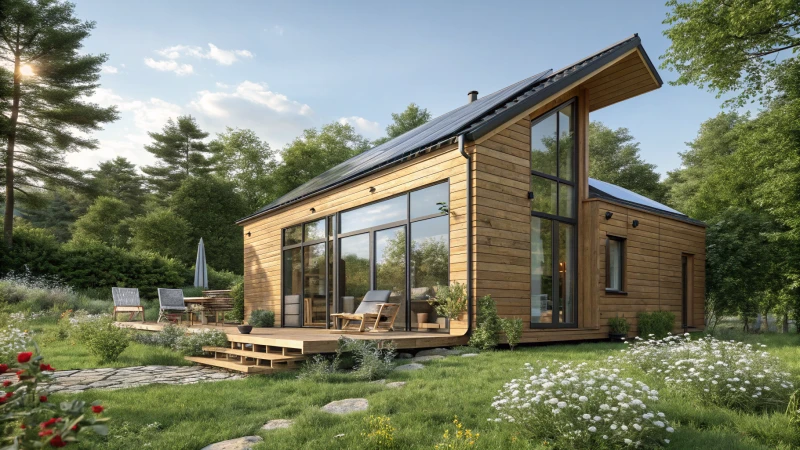
Resource Efficiency
When I think about building a tiny home, I imagine being part of a process that uses fewer materials, which is such a relief considering the strain on our planet's resources. These homes don't just take up less space on the land; they leave room for nature to thrive. Often, they incorporate recycled or reclaimed materials, which gives everything a unique story and reduces environmental impact.
Energy Efficiency
Living in a tiny home, I've found that energy bills become a tiny fraction of what they used to be. These homes are designed to be energy efficient by default. Many come equipped with solar panels and smart tech that maximizes every watt. Imagine using up to 45% less energy4 than a traditional house—it's not just a statistic, it's a lifestyle change I proudly embrace.
| Feature | Traditional Home | Tiny Home |
|---|---|---|
| Average Energy Use | 10,000 kWh/year | 5,500 kWh/year |
| Space Heating/Cooling | 50% | 30% |
| Water Usage | 100 gallons/day | 40 gallons/day |
Sustainable Materials
I love how builders use sustainable materials like bamboo or recycled steel, not just for their durability but because it feels good knowing I'm living in harmony with the planet. Choosing local materials also cuts down on emissions from transport—it's all about thinking globally while acting locally.
Waste Reduction
Embracing tiny living has taught me the beauty of minimalism. With limited space, every purchase is intentional, reducing waste drastically. Many tiny homes feature composting toilets and rainwater collection systems. Adopting these practices makes me feel like I'm truly contributing to the environment.
Impact on Lifestyle Choices
Living tiny has nudged me towards more sustainable choices overall5. I've started growing my own veggies and rely more on public transport since parking is minimal. This lifestyle fosters community—we share resources and skills, turning neighbors into friends.
Environmental Impact Table
| Aspect | Impact on Traditional Living | Impact on Tiny Home Living |
|---|---|---|
| Carbon Footprint | High | Low |
| Material Waste | High | Minimal |
| Land Usage | Extensive | Minimal |
Tiny homes use 50% less energy than traditional homes.False
Tiny homes use up to 45% less energy, not exactly 50%.
Tiny homes encourage minimalistic living and waste reduction.True
Limited space in tiny homes promotes minimalism and reduces waste.
Who is the Target Market for Tiny Homes?
Ever wondered why tiny homes are becoming the go-to choice for so many people these days? Well, let me take you on a journey through the lives of those embracing these cozy, minimalist abodes.
The target market for tiny homes includes young professionals, retirees, eco-conscious individuals, and those seeking affordable living solutions. They're drawn to tiny homes for their cost-effectiveness, minimal environmental impact, and simplicity.
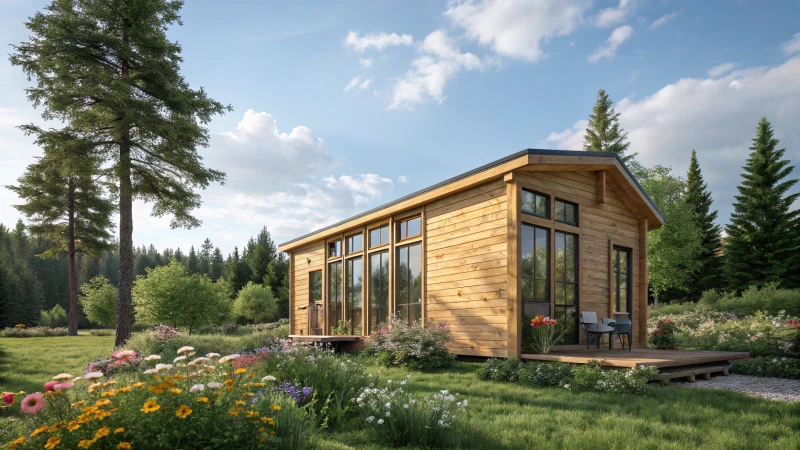
Young Professionals and Millennials
Young professionals are among the key adopters6 of tiny homes. This demographic values flexibility and affordability, which tiny homes offer in abundance. Many millennials are turning to tiny homes as an alternative to expensive urban housing.
| Pros | Cons |
|---|---|
| Affordable entry into homeownership | Limited space for families |
| Minimalist lifestyle | Zoning challenges |
Retirees and Downsizers
I've chatted with quite a few retirees who swear by the simplicity of tiny living. For them, it's not just about cutting costs but also about reducing clutter and maintenance. Imagine having more time to travel or pursue hobbies rather than worrying about house upkeep. That's the dream, right?
Eco-Conscious Consumers
If you're like me and constantly thinking about your carbon footprint, tiny homes are a revelation. They use sustainable materials and are designed to be energy-efficient. I mean, who wouldn't want a home that aligns with their eco-friendly values?
- Energy Efficiency: Tiny homes can use up to 45% less energy compared to traditional homes.
- Sustainable Materials: Often built with recycled or eco-friendly materials.
Remote Workers and Digital Nomads
Since remote work has become more prevalent, tiny homes have emerged as the perfect solution for digital nomads like myself. They offer the freedom to live and work from virtually anywhere without breaking the bank.
Tourism Operators and Real Estate Developers
In the tourism industry, I've seen how tiny homes add a unique charm to accommodations like glamping sites7. Real estate developers are catching on too, especially in urban areas where space is at a premium. Tiny homes provide innovative solutions for affordable housing projects.
- Tourism Sector Use: Integrating tiny homes into eco-resorts and glamping sites adds novelty and appeal.
- Real Estate Innovations: Developers targeting urban millennials or retirees are exploring micro-living communities as a niche market opportunity.
Young professionals are the primary buyers of tiny homes.True
Young professionals value flexibility and affordability, making them key adopters.
Tiny homes increase energy consumption compared to traditional houses.False
Tiny homes use up to 45% less energy due to their size and efficiency.
What Challenges Do Tiny Home Buyers Face?
Diving into the tiny home lifestyle is exciting, but it comes with its own set of unique hurdles.
Tiny home buyers often face challenges like zoning law restrictions, financing difficulties, and adapting to compact living spaces. Being aware of these obstacles is essential for a seamless transition to tiny living.
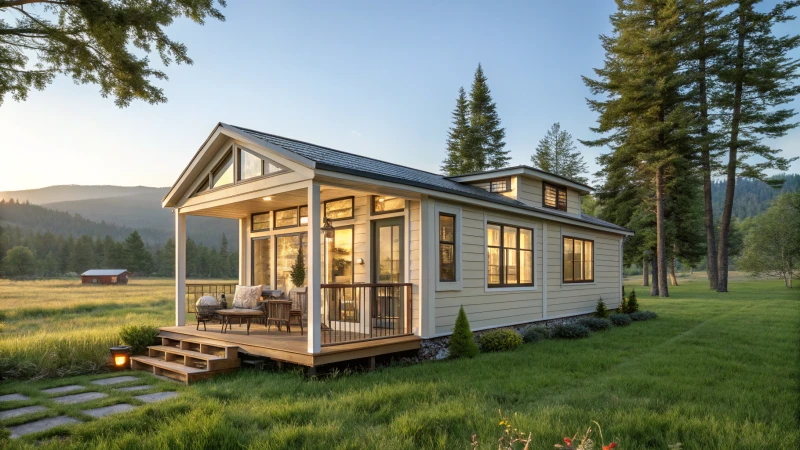
Navigating Zoning Laws
When I first considered the tiny home lifestyle, navigating zoning laws felt like deciphering an ancient map. Many places have these puzzling rules about how small a house can be and where it can legally stand. I remember standing in the town hall, armed with questions, trying to figure out where my future tiny abode could exist. Understanding local zoning laws8 is vital for anyone venturing into this lifestyle.
Financing a Tiny Home
Then there was the financing hurdle. Traditional lenders often look at tiny homes like an unsolvable riddle. I had to get creative, exploring personal loans and even RV loans9 to make my tiny dream a reality. It felt like a financial scavenger hunt, but researching financing options thoroughly made all the difference.
Adjusting to Limited Space
Living in a tiny space required me to rethink everything about my daily routine. It’s like playing a real-life game of Tetris with my belongings. Maximizing every inch for comfort meant embracing minimalist living and creative storage solutions10. While it was challenging, it also became an adventure in innovation.
| Challenge | Description |
|---|---|
| Zoning Laws | Restrictions on where tiny homes can be legally placed due to size and building codes. |
| Financing Options | Limited traditional lending options lead to the need for exploring alternative funding sources such as personal loans or RV loans. |
| Space Constraints | Requires adapting to a smaller living environment, necessitating creative use of space and minimalist living strategies. |
| Utility Connections | Ensuring access to utilities such as water, electricity, and sewage systems can be complex and costly. |
| Resale Value Considerations | Tiny homes may have different resale value dynamics compared to traditional homes, affecting long-term investment potential. |
Understanding these challenges empowers buyers to make informed decisions and better prepare for tiny home living. By exploring aspects from financing11 to zoning, you can arm yourself with the knowledge needed to overcome these obstacles.
Zoning laws are the biggest hurdle for tiny home buyers.True
Many areas have minimum dwelling sizes, limiting tiny home placement.
Traditional mortgages are easy to secure for tiny homes.False
Lenders hesitate due to tiny homes' unconventional nature, requiring alternatives.
Conclusion
Tiny homes are gaining popularity for their affordability, eco-friendliness, and minimalist lifestyle, appealing to young professionals, retirees, and environmentally conscious individuals seeking sustainable living solutions.
-
Discover how integrating renewable energy sources can decrease ongoing utility expenses. ↩
-
Learn how durable materials in tiny homes can reduce maintenance costs over time. ↩
-
Understand different financial solutions available for purchasing tiny homes. ↩
-
Discover how tiny homes cut energy use significantly compared to larger homes. ↩
-
Explore how tiny homes promote sustainable living habits beyond just housing. ↩
-
Discover why young professionals find tiny homes an attractive alternative to traditional housing. ↩
-
Learn how tourism operators incorporate tiny homes into luxury camping experiences. ↩
-
This link provides detailed information on zoning laws for tiny homes across different states, helping buyers understand legal requirements. ↩
-
Exploring alternative financing options can help buyers find suitable funding for their tiny home purchase. ↩
-
Discover innovative storage ideas that maximize space in a tiny home, making it more livable and functional. ↩
-
This resource offers insights into various financing avenues available specifically for tiny home purchases. ↩



